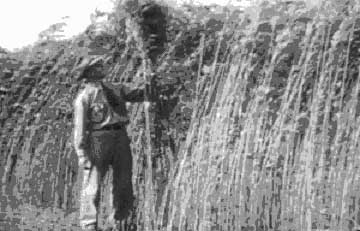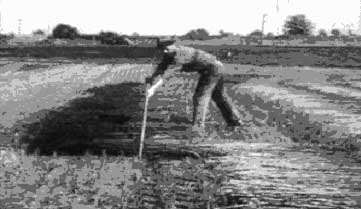|
UVSS HEMPOLOGY 101 CLUB LESSON #12 : HEMP HISTORY - Part 1 |
|
|
Cannabis was likely the first cultivated crop because it provided seeds for food and fuel, fiber for rope, mats and cloth, and the cannabinoids for medical and spiritual benefits. The wide variety of useful products created with cannabis, combined with being hardy and fast growing with a short growing season, makes it one of the most versatile and valuable plants. Protecting cannabis fields through the summer may have been one of the reasons to begin settling in one location. Some of the oldest pottery, clothing, rope and paper is made with cannabis fibers. Old clay pots found in Taiwan contained strands of hemp fibers to help hold the piece together. Archeological evidence suggests that the Chinese had began developing technology for mass growing, harvesting and manufacturing hemp over 6000 years ago. Cannabis was likely harvested for seed, fiber and hash in the Middle East and Persia for thousands of years before the Egyptian Dynasties dominated the planet. Canvas was made from cannabis, making it an important commodity in the development of the sailing industry. It may have been after the Romans prohibited the use of incense that strains of cannabis to produce fiber and seed were developed and spread across the known world. Hemp was used for clothing, rope, canvas and seeds throughout Europe in the Dark Ages. Seeds for eating have been found on the frozen bodies of ancient travelers in Siberia, with other discoveries of seeds, clothing and resin being made every year. By the 1500’s, hemp was mass-produced in Europe for canvas for fleets of navy sailboats, many of which had up to 60 tones of hemp canvas and rope. It was not long after America was ‘discovered’ that hemp was being grown in large quantities there, too. Hemp became so important that in 1640 the governor of Connecticut declared every resident must grow hemp. Several states took hemp for tax payments. The state of Kentucky was found to have excellent soil to grow hemp and at its peak in the 1800’s there were 160 hemp-processing factories in the state. Other plants that were easier to process took many markets away from hemp by the late 1800’s. In 1916 a process was invented that turned the hurds, or woody pith, from hemp into paper. In 1917, a decorticator was invented by George Schlichten that could break the plant down into hurds and good fiber. That machine and the hemp plant were effectively buried by businessmen from timber, newspaper, cotton, chemical, petrochemical, and pharmaceutical companies who saw hemp as a threat to their success. After a convincing media Reefer Madness campaign, many governments around the world prohibited all forms of cannabis. Ironically, in 1942, 5 years after the passing the Marijuana Tax Act, the US government produced the film ‘HEMP FOR VICTORY’ to encourage farmers grow hemp for the war. There were many governments in Europe and Asia that continued to grow hemp while enforcing drug laws, including France and Spain where hemp is grown for rolling papers. Renewed interest in hemp came after the publication of THE EMPEROR WEARS NO CLOTHES, by Jack Herer in 1985. In 1998, Canada began allowing the cultivation of hemp, much to the envy of farmers in the US, who are still trying to grow hemp to supply the growing market for hemp products. Many products are appearing on the market and more stores are selling cannabis-based products than ever before. Currently, there is no hemp fiber processing plants operating in Canada. |
|
| International Hempology 101
Society www.hempology.ca |
Cannabis Buyers' Clubs of Canada www.cbc-canada.ca |


